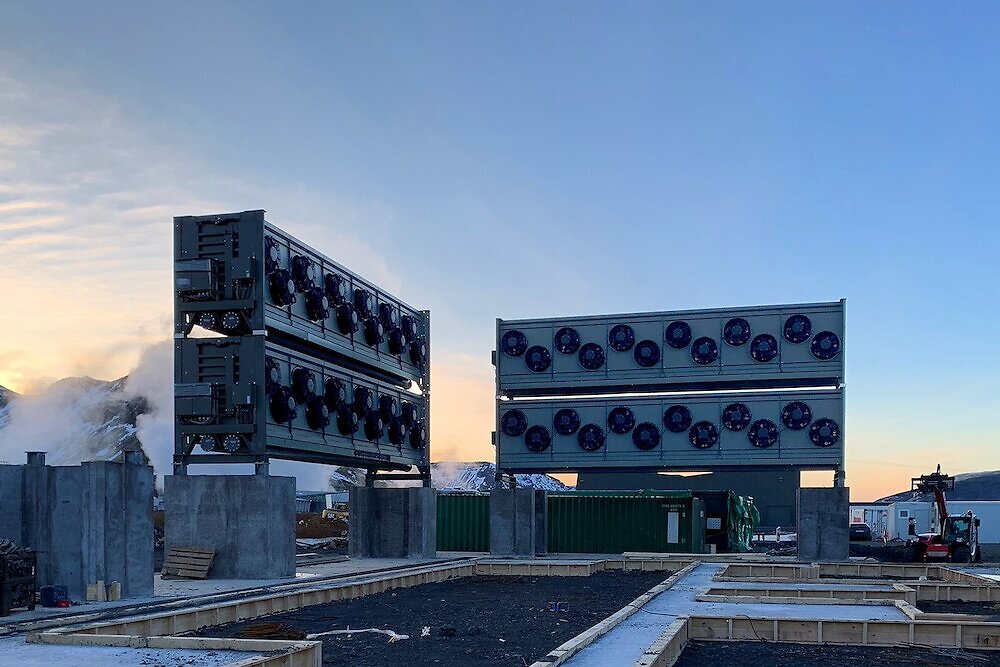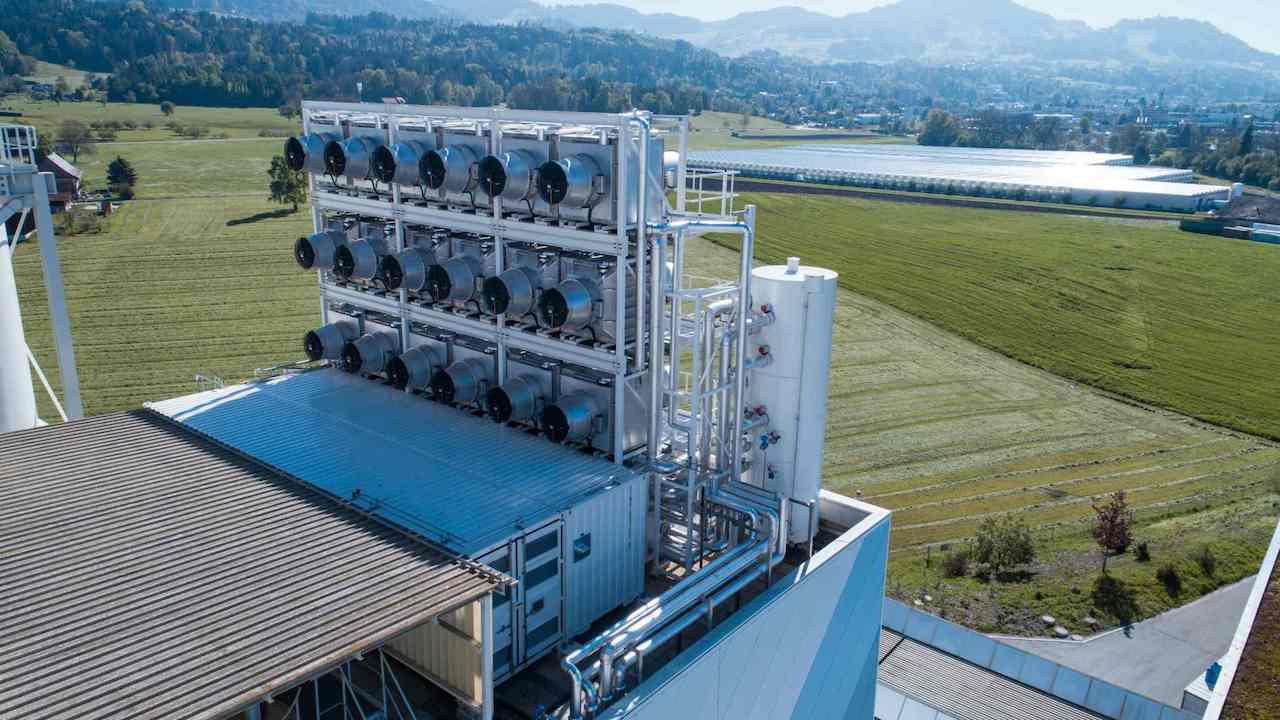
Understanding Carbon Dioxide Removal Technologies
A new study published in the Royal Society of Chemistry has compared the efficiency and energy consumption of 12 different carbon dioxide removal (CDR) methods. The research was led by Graphyte CTO Hannah Murnen and CEO Barclay Rogers, in collaboration with Daniel L. Sanchez and Peter Psarras. Their goal was to create a standardized framework for evaluating engineered carbon removal solutions.
The study reviewed various approaches, including Enhanced Rock Weathering (ERW), biochar production, biomass sludge sequestration, Direct Air Capture (DAC), and Bioenergy with Carbon Capture and Storage (BECCS). It assessed these technologies based on their carbon removal efficiency and energy consumption requirements.
>> RELATED: Google Contracts Over $100M in Carbon Removal Credits in 2024

The Most Efficient Carbon Removal Methods
Using a baseline efficiency model, the research identified the most effective CDR approaches. The top-performing technologies included:
1. Marine Biomass Sinking – Efficiency Score: 0.962
- This method involves sinking biomass into anoxic marine environments, where it is preserved without releasing CO2.
2. Biomass Sludge Sequestration – Efficiency Score: 0.951
- This technique stores carbon-rich biomass sludge in conditions that prevent decomposition and carbon release.
3. Enhanced Rock Weathering (ERW) with Olivine – Efficiency Score: 0.912
- ERW accelerates natural rock weathering processes, capturing CO2 in mineral form. Companies like Eion, Carbon Drawdown Initiative, and Lithos Carbon are actively scaling ERW solutions.
4. Carbon Casting – Efficiency Score: 0.877
- This process traps carbon into solid materials, making it a durable removal solution.
5. BECCS – Power Generation – Efficiency Score: 0.870
- A method where bioenergy is used for power generation, capturing and storing the resulting CO2. Companies like Drax Group, Archer Daniels Midland (ADM), and Microsoft are leading efforts in BECCS for power generation.
6. Enhanced Rock Weathering with Basalt – Efficiency Score: 0.823
- Similar to olivine-based ERW, but utilizing basalt rock to store CO2 in mineral form.

>> In Other News: NewHydrogen CEO Steve Hill and University of Waterloo Expert Explore Integration of Hydrogen in Microgrids and Smart Grids
Biomass-Based Methods vs. Direct Air Capture
The study revealed that biomass-based solutions generally have higher efficiency compared to Direct Air Capture (DAC). Biomass approaches demonstrated carbon removal efficiencies ranging from 0.55 to 0.96, whereas DAC methods scored between 0.06 and 0.15.
This gap exists because biomass already contains concentrated CO2, making the removal process more straightforward and less energy-intensive. However, researchers caution that biomass conversion can lead to carbon losses, reducing its overall impact.
"We’re seeing promising results from biomass-based removal, but efficiency losses during processing remain a challenge," said Barclay Rogers.
Companies like Charm Industrial, Carbonfuture, and XPRIZE Carbon Removal winner Takachar are advancing biochar production and biomass-based sequestration techniques to improve efficiency and scalability.
The Energy Cost of Carbon Removal
The study also analyzed how much energy each method requires per ton of CO2 removed. Unsurprisingly, DAC technology has the highest energy consumption, requiring between 10 and 12 GJ per ton of CO2 captured.
By comparison:
- Biomass Sludge Sequestration – 0.137 GJ/tCO2
- Marine Biomass Sinking – 0.376 GJ/tCO2
- Carbon Casting – 0.690 GJ/tCO2
- BECCS for Power – 1.440 GJ/tCO2
Despite its energy intensity, DAC efficiency improves significantly when powered by renewable energy. However, weather conditions can impact performance, with solid sorbent DAC dropping from 83% to 77% efficiency in unfavorable climates.
Leading companies in Direct Air Capture include Climeworks, Carbon Engineering, and Heirloom Carbon, all of which are working to scale DAC technology while reducing its energy requirements.
Implications for the Carbon Removal Industry
The findings from this study highlight the importance of balancing efficiency with energy consumption when evaluating CDR technologies. The results suggest that low-energy biomass solutions could be a viable near-term strategy, while DAC may require further innovation to improve efficiency.
"Understanding energy use and efficiency trade-offs is crucial as we scale carbon removal solutions," said Hannah Murnen.
Companies like Google and Stripe are making major investments in carbon removal, funding projects across ERW, biochar, DAC, and BECCS. As governments and corporations push for net-zero goals, these insights will help guide investments toward the most effective carbon removal solutions.
With ongoing research and innovation, the CDR industry continues to evolve, bringing new opportunities for scalable climate solutions.
Subscribe to the newsletter
Daily decarbonization data and news delivered to your inbox
Follow the money flow of climate, technology, and energy investments to uncover new opportunities and jobs.
Latest issues
-
How Direct Air Capture Could Drop 75% in Cost
Inside This Issue 💨 How Direct Air Capture Could Drop 75% in Cost ⚡ Cache Power Advances 30 GWh Compressed Air Energy Storage Project In Alberta 🪨 Canada Nickel And The University Of Texas At Aust...
-
EPA Rule Unlocks $20B Biofuels Boom: The Decarbonization Players Who Gain
Inside This Issue 🌾 EPA Rule Unlocks $20B Biofuels Boom: The Decarbonization Players Who Gain ⛏️ DMS Georgia: World’s First Deep Mine Carbon Storage 💧 Dirty Water Boosts Prospects for Clean Hydrog...
-
Inside the Power Plant Conversion Everyone’s Arguing About
Inside This Issue ⚡ In Controversial Move, LADWP Says It Will Shift Its Largest Gas Power Plant to Hydrogen 🌎 NorthX Catalyzes the Rise of Canada's Carbon Removal Industry 🤝 Elemental Clean Fuels ...
Company Announcements
-
CHAR Tech Invited To Join The Canadian Iron & Steel Energy Research Association (CISERA)
TORONTO, Oct. 29, 2025 (GLOBE NEWSWIRE) -- CHAR Technologies Ltd. ("CHAR Tech" or the "Company") (TSXV:YES), a leader in sustainable energy solutions, is pleased to announce that it has been invite...
-
Scientists May Have Found a Near-Limitless Energy Source That Could Power Earth Forever
The Midcontinent Rift is an ancient crack in the ground that started to open across the middle of North America about 1.1 billion years ago. Over time, this rift became home to magma, water, metals...
-
ICAO General Assembly 2025 Reaffirms Aviation’s Commitment to Net-Zero by 205
The 42nd International Civil Aviation Organization (ICAO) General Assembly, held in Montreal in October 2025, made waves with pivotal decisions concerning the future of aviation sustainability. As ...
-
University of Alberta-led research highlights emerging hydrogen storage potential at Robinsons River Salt Dome November 04, 2025 08:00 ET | Source: Vortex Energy Corp. VANCOUVER, British Columbia...